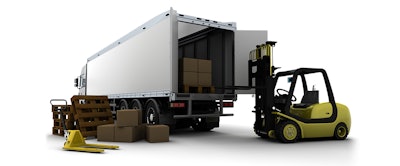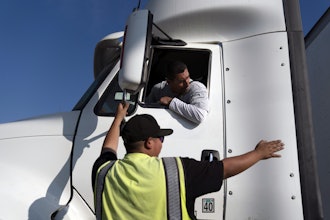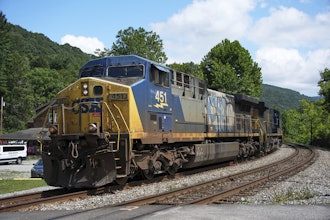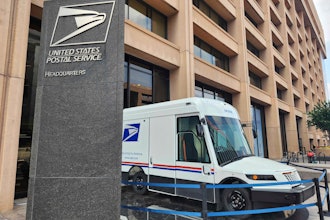
 Thomas Schied, Vice President and Director of Asset Management at TD Bank Equipment Finance
Thomas Schied, Vice President and Director of Asset Management at TD Bank Equipment FinanceThe accurate tracking of shipments is essential for the transportation, logistics and manufacturing industries, as many companies are impacted by a range of transport networks – rail, sea, air, and ground – and insight and connection into those networks is important to determine the status of shipments and the management of inventory. One can presume this is why the Transportation and Logistics (T&L) industry became early adopters of sensors and tracking devices in 2005, when The Department of Defense required suppliers and shippers to use RFID tags on inbound shipments.
Since then, the T&L industry has been using technological aspects of the Internet of Things (IoT) in practical applications including real-time delivery tracking, predictive maintenance of assets, robotics and automation and route optimization, among others. As the development and deployment of the IoT capabilities continues to expand, T&L companies could eventually have visibility into every operation across the entire supply chain, from the source of the raw materials to the end use of the product. This visibility will enable companies to improve transparency between the shipper and receiver, increase efficiency within the transportation infrastructure, and lead to more informed decisions.
IoT Opens a Window into the Product Journey
Integration of the IoT provides transparency throughout the logistics chain, from pick up through end delivery whether the product sits on a shelf, in a truck, in a warehouse or on a showroom floor. In the shipping industry, logistics managers are able to use analytics to track and adjust temperatures of vehicles carrying food products in real-time. In addition to reducing possible spoilage because of temperature variations, the sensors also provide insight into the exact delivery route for the shipper and receiver, building trust and transparency and preventing discrepancies.
Some manufacturers are designing IoT-powered “smart factories” to unearth data-driven insights, Deloitte Consulting wrote in an article. A smart factory creates a virtual factory embedded within the IoT software that monitors equipment and interacts with workers. Smart factories can predict where bottlenecks will form or what processes will develop maintenance issues. For example, software can signal when a machine’s part must be changed, uncover the root cause of a breakdown and even swap out a piece of equipment right before it fails, keeping production running safely. The analytics systems are constantly improving and streamlining efficiencies, as the systems learn and think while in operation.
Maximizing Business Value
While the IoT successfully connects devices to the internet and collects data, the value generation is derived by understanding how, when and where to use the data. Through predictive analytics, logistics and transportation companies are able to make business predictions to increase efficiencies, reduce costs and improve processes.
One of the most common uses of the IoT is for preventative maintenance and the maximizing of assets. In this situation, sensors provide real time data which is used with historical data to determine when an asset needs replacement. For manufacturing and production companies, this information can result in less down time in production lines, more efficient purchases of spare parts and the elongated use of the machine. Because sensors can also take into account external factors, transportation and logistics companies can customize the maintenance plans of trucks based on the geographic and environmental conditions in which they operate to maximize their lifecycle. This ensures that tires on trucks based in New England are changed more frequently—than those that operate in the Southwest, for example.
Transport visibility allows transportation companies to optimize delivery routes. By using the data and analytics collected through the IoT, T&L companies can alter routes on demand to prevent bottlenecks at loading docks or to accommodate travel adjustments as spot inventories change by location. This information is instrumental in ensuring the on-time receipt of goods, as the fastest route may not always be optimal. It also reduces the fuel and labor costs associated with prolonged delivery schedules. Within a warehouse, this transport visibility can help streamline the retrieval of materials, as the data routes forklifts based on the location of others in various aisles.
Smart Connectivity Concerns
Although there are many advantages that stem from the integration of the IoT, the ecosystem is also expected to bring some challenges, as companies may have to contend with the prospect of security breaches, a reallocation of jobs and business disruption.
With the recent Facebook and Uber data breaches, there is growing concern for network security. Without safeguarding measures, an IoT platform with interconnecting systems could result in a hacked grid that re-routes trucks or controls stop lights.
The advanced and complicated nature of smart connectivity technology creates its own issues, underscored by a growing shortage of skilled STEM (science, technology, engineering and mathematics) workers needed to operate IoT software tools.
Additionally, the IoT is expensive and time consuming to implement, and the more parts of a business that are integrated into an IoT system, the more disruptions that business could face. However, integration can be conducted in stages over the course of several years. As we see logistics and supply chains become more complex, implementation of IoT is necessary.
As the transportation and logistics industry continues to evolve, the importance of end-to-end visibility and transparency within the supply chain is paramount. With the implementation of the (IoT), the data and advanced analytics gathered provides these companies with unprecedented visibility into process flows within the comprehensive delivery system.
Connectivity through the IoT will eventually encompass entire supply chains, from raw materials to packaged products on store shelves. The technology will affect every department of every company that adopts it. Ultimately, the decision to implement an IoT platform and transcend its challenges will come down to each company’s willingness to adapt to a system that offers unprecedented levels of information and visibility.
Thomas Schied is the Vice President and Director of Asset Management at TD Bank Equipment Finance.























